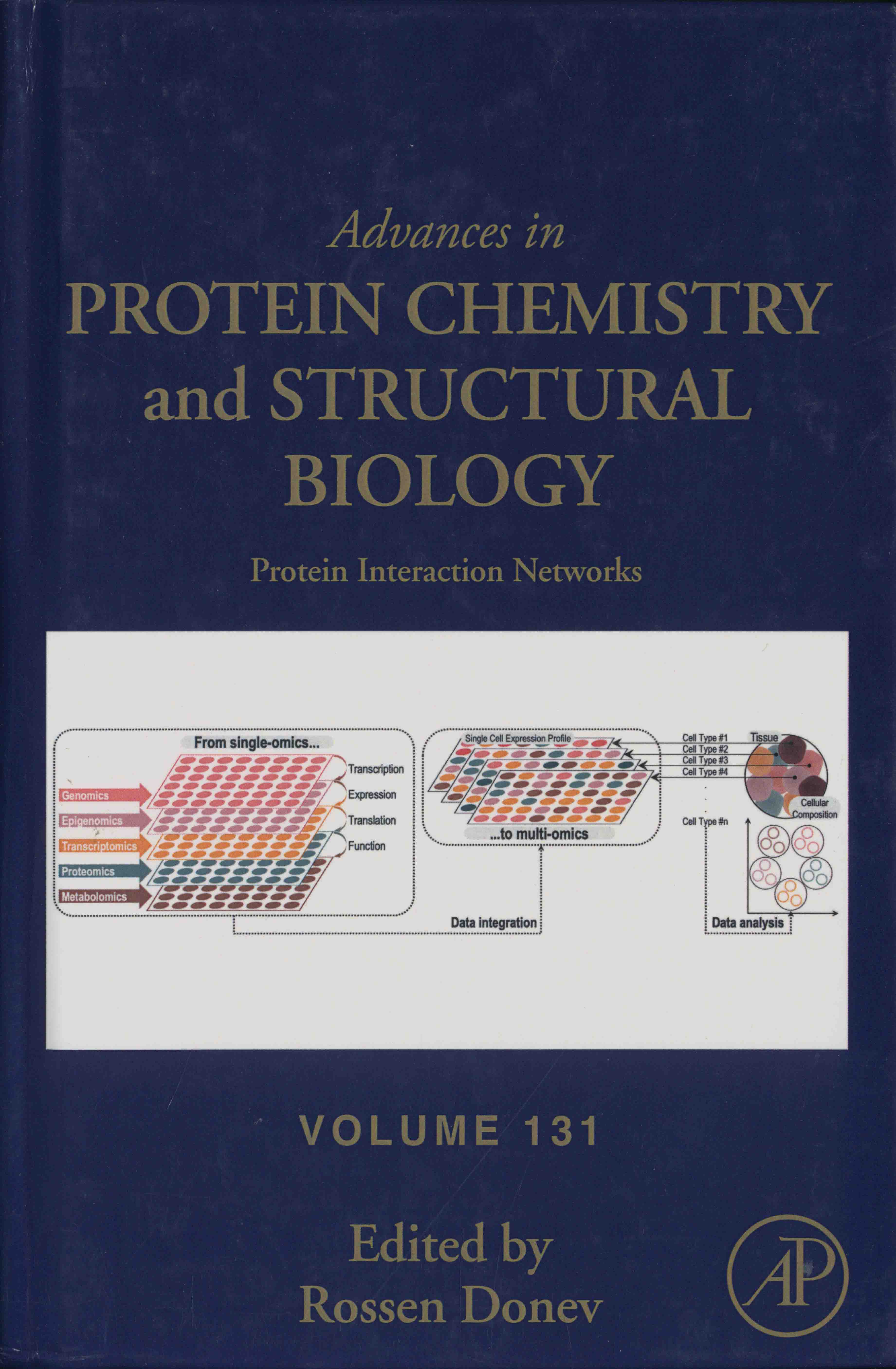 |
Advances in protein chemistry and structural biology. volume 131, Protein interaction networks / edited by Rossen Donev. -- Cambridge : Academic Press, 2022. – (58.17421/A244p/v.131) |
Contents
Contributors
1. On the current failure--but bright future--of topology-driven biological network alignment
1. Introduction
2. Preliminaries
3. Testing hypotheses RI and R3
4. Addressing R2: Measuring functional relevance of topological objective functions
5. Discussion
6. Methods
7. Data availability
Acknowledgments
Author contributions
References
2. From single-omics to interactomics: How can ligand-induced perturbations modulate single-cell phenotypes?
1. Introduction
2. Single-cell omics: From unimodal to multimodal analysis
3. Bridging structure and cell data as drivers to understand ligand-induced perturbations
4. Conclusion
Funding
References
3. A review of bioinformatics tools and web servers in different microarray platforms used in cancer research
1. Microarray and bioinformatics
2. Application of microarray data
3. Classification of microarray data in cancer
4. Microarray data expression repositories
5. Gene expression profiling (GEP)
6. Tools available to analyze microarray data
7. Biological networks
8. Pathway databases and analysis
9. Gene and transcriptional regulatory networks
10. Metabolic networks
11. Drug-drug interaction networks
12. Clustering, classification, and comparison of microarray data
13. Methodology and results
14. Limitations
15. Conclusion and future perspectives
Acknowledgments
Author contributions
Conflict of interest
Funding
References
Further reading
4. Fusion proteins mediate alternation of protein interaction networks in cancers
1. Introduction
2. Structural features of fusion proteins in cancers
3. How do fusion proteins alter the protein interaction network?
4. How to analyze the fusion proteins mediated alternation of PPI networks?
5. Identifying altered fusion PPI networks and targeting fusion proteins in cancers could help to develop the precision medicine platform
6. Concluding remarks
Acknowledgments
References
5. Integrative ontology and pathway-based approach identifies distinct molecular signatures in transcriptomes of esophageal squamous cell carcinoma
1. Introduction
2. Materials and methods
3. Principal component analysis (PCA) of hub genes
4. Results
5. Discussion
6. Conclusion
Acknowledgments
Author contributions
Conflict of interest
Role of funding source
References
6. Protein interaction networks of the mammalian core clock proteins
1. Introduction
2. Circadian rhythm in mammals
3. Protein-protein interaction network
4. Conclusion
Acknowledgment
References
7. Investigation of differentially expressed genes and dysregulated pathways involved in multiple sclerosis
1. Introduction
2. Methodology
3. Results
4. Discussion
5. Conclusion
Acknowledgments
Author contributions
Conflict of interest
Role of funding source
References
8. Viral hijacking mechanism in humans through protein-protein interactions
1. Introduction
2. Human-virus protein-protein interactions
3. Interfaces of protein interactions in virus-host systems
4. Protein domains in the context of virus-host interactions
5. Protein interaction networks underlying viral processes
6. Intraviral interactomes
7. Different patterns of virus interaction
8. Viral protein interaction with human cellular proteins
9. HIV infection role through proteins
10. SARS-CoV-2 infection role through proteins
11. Conclusion
Acknowledgment
Reference
9. Glycoprotein molecular dynamics analysis: SARS-CoV-2 spike glycoprotein case study
1. Introduction
2. Methods
3. Trajectory file analysis (RMSD/RMSF/H-bridges)
4. SASA/AbASA calculations and analysis
5. Results and discussion
6. Conclusions
Acknowledgments
References
10. Exploring COVID-19 pathogenesis on command-line: A bioinformatics pipeline for handling and integrating omics data
1. Introduction
2. Applications
3. Methodologies
4. Results
5. Discussion
6. Conclusions
Acknowledgments
Data and code availability
References